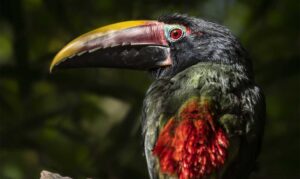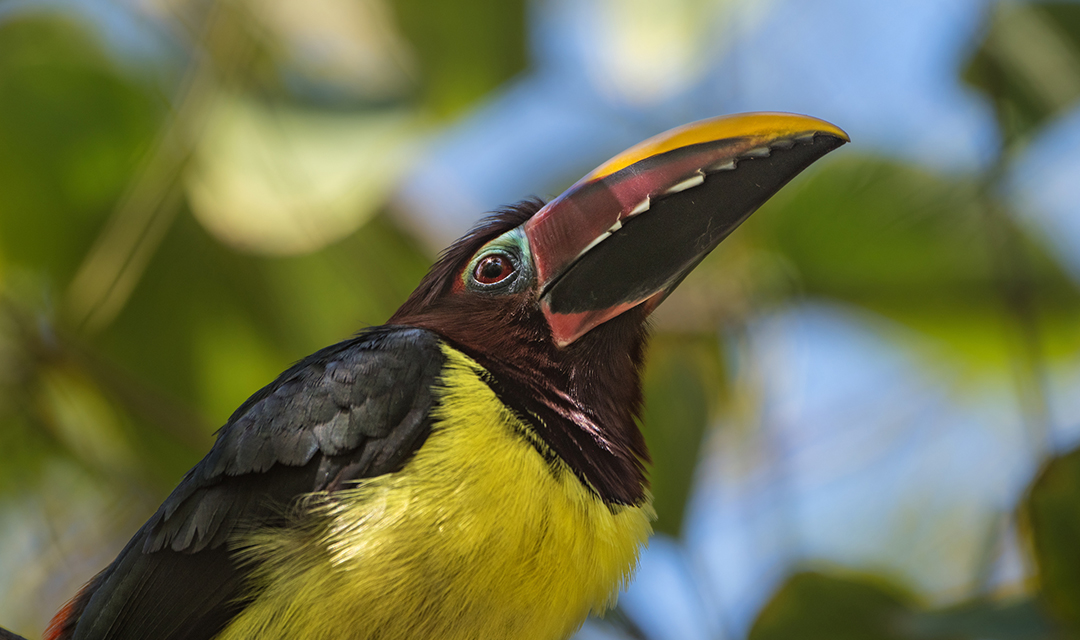About
Green aracaris are the smallest members of the toucan family. Although their colorful bills appear massive, they are honeycombed with air pockets and so are much lighter than they look. Serrated edges on the bill work like a bread knife to help grasp and open fruit, and its length increases the bird’s reach, allowing access to food that would not otherwise be available. Aracaris usually swallow fruit whole and serve as important seed dispersers in the rainforest, depositing seeds from the fruit they eat far away from parent trees.
Strong and fast fliers, green aracaris easily navigate trees in the rainforest canopy. Flights are usually short, with wings beating only a few times followed by a short glide. They travel along branches by hopping. Not especially gregarious, aracaris are typically found in small flocks or family groups. Like most toucans, green aracaris do not excavate their own nests in tree cavities, instead taking over old woodpecker nests.


Habitat
Green aracaris inhabit the humid lowland forests of South America, including areas northeast of the Amazon Basin, the Guianas, and the eastern Orinoco River of Venezuela.
Diet
These birds’ diet is primarily fruit. Occasionally insects are eaten as a source of protein.
Physical Characteristics
Adult aracaris measure 12 to 16 inches in length, and weigh between 3.9 and 5.7 ounces. Their lifespan in the wild is typically four to six years, but in human care a bird once lived to be 18 years old.
LOCATION WITHIN THE ZOO
You’ll find this bird in the Rainforest of the Americas. See Zoo Map.



